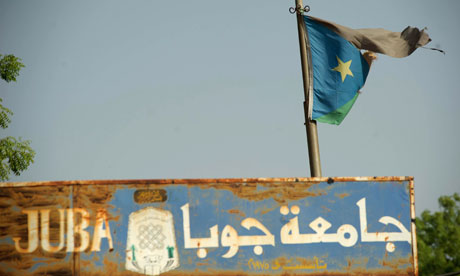As it prepares for independence, south Sudan should look to the university to help lay down the foundations of a new state

On 9 July south Sudan will emerge as Africa's youngest state. Considerable effort is going into searching for how the country can ramp up its human capacity for economic transformation. Juba University might just provide an answer.
Critics of the role of universities in economic transformation argue that higher education takes too long to show results and that its focus is usually too academic. However, the evidence suggests that practically oriented universities offer the fastest and most durable ways to incubate new states. With the right vision, universities can confer their attributes to a new state.
A good example of this is the creation of Israel. For more than two decades before the state was created, Technion (Israel Institute of Technology) helped to lay the foundations of the modern state of Israel. The identity of the country as a player in the field of science and technology can be traced to the vision of Technion.
This story has been repeated in many countries. Rwanda, for example, created the Kigali Institute of Science and Technology after the genocide, to help rebuild the country. It devised a curriculum that allowed students and faculty staff to start work on practical projects aimed at the reconstruction of the damaged infrastructure.
Northern Somaliland provides another remarkable example of the role universities can play in state formation. Following the collapse of the regime in Mogadishu, Somaliland created the University of Hargeisa that has played a critical role in building the human resource base needed for economic development. Since then, four other universities have been created in the country in response to development needs. The most recent focuses on science and technology. Higher education has played a critical role in giving Somaliland the capabilities it needed to express itself as a sovereign state, irrespective of the lack of international recognition.
These examples contain instructive lessons for southern Sudan, relating to education policy, curriculum, pedagogy and international collaboration, especially on the role of diasporas. South Sudan's development policy will need to focus on rapid economic transformation to improve the welfare of the people. This will not be achieved without creating the knowledge base needed to transform natural resources into goods and services. Perhaps a proportion of the revenue from oil could be set aside in a national capacity development trust to support Juba University.
This task is already foreshadowed in the objectives of Juba University. They include training "manpower for the developmental needs of the southern Sudan and similar regions in the country". The focus of this training is "to determine rational methods of exploitation of the vast natural resources of the country for development".
Juba University can derive its curriculum from the priorities set by the government and identify ways to train or mobilise expertise to meet those challenges. The university's curriculum will need to be flexible to accommodate the needs of the country. The university could position itself as being a truly developmental university. It could learn a few additional lessons from the University for Development Studies (UDS) in northern Ghana, which has found a way to link students, faculty, government officials and local communities to address development challenges.
UDS can also offer experience of pedagogy to ensure that students can balance theoretical with practical training. Additional ideas can be derived from pioneering approaches at EARTH University, where students are trained to create jobs rather than become job seekers.
Finally, Juba University can serve as the focal point for attracting south Sudanese diasporas who are interested in contributing to the country's development.
Work on building south Sudan's capacity must start now. The best hope lies in the marriage between the state and higher education. The state has only half the solution. The other is hidden at Juba University.
No comments:
Post a Comment